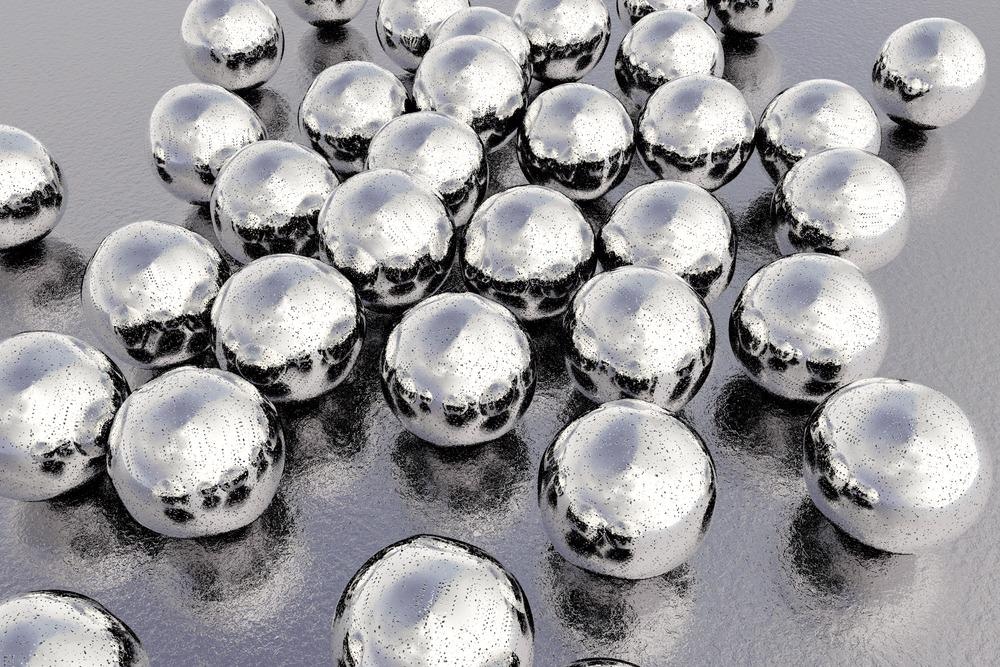Researchers from India have shared an eco-friendly method for the fabrication of metal nanoparticles in their latest article available as a pre-proof in the journal Environmental Nanotechnology, Monitoring & Management.

Study: Carbon dots as a sustainable alternative to plant extracts for the green synthesis of noble metal nanoparticles. Image Credit: Kateryna Kon/Shutterstock.com
Importance of Metal Nanoparticles
Metal nanoparticles in simple words could be defined as nanoscale derivatives of pure metals such as gold, thallium, and silver, or their compounds. Metallic nanoparticles (MNPs) feature a metal core formed of synthetic metal or metal oxide that is generally surrounded by an organic or inorganic substance or metal oxide shell.
The production of noble metallic nanoparticles has evolved into an enthralling process of scientific study. Because of their exceptional toxicological and photonic characteristics, silver and gold nanoparticles have received a great deal of attention, opening the way for extraordinary applicability in electromagnetic, semiconductors, photonics, biomedical, biosensing, catalytic, and medicinal domains.
Preparation Methods
Metal nanoparticles are often produced by reducing matching metal salt solutions with reduction enhancing substances such as sodium borohydride and citrate under severe experimental parameters. Furthermore, encapsulating entities are required, with amine or thiol-containing organic ligands and other surfactants being used to create these nanoparticles.
Previously, phyto-mediated reduction processes employing plant extracts have been used in the manufacture of metal nanoparticles to fulfill the green standard in reactions by avoiding hazardous chemicals.
Despite significant progress in the manufacture and usage of MNPs across the world, there is still a significant gap in information about the toxicity-related consequences of these on health and the environment.
Why Carbon Dots (CDs) are Important?
Carbon dots (CDs), a recent addition to the nano-carbon family distinguished by carbon nucleus related functional group, possesses exceptional biochemical and optoelectronic properties features such as adjustable fluorescence, high water dispersion, low cytotoxicity, and excellent stability.
C-dots are a novel type of luminous small-carbon nanocomposites with particle sizes less than 10 nm. Because of these characteristics, they have emerged as attractive candidates in detection, catalyst supports, bio-imaging, illumination, biomedical applications, and other domains.
Future research will focus on the creation of various morphologies, dimensions, and target-specific carbon dots. The synthetic paths to CDs, like any other nanomaterial, are loosely classed as top-down and bottom-up processes.
Greener Methods of Carbon Dot Synthesis
A great deal of attention has been dedicated to the implementation of green solutions for manufacturing CDs from affordable environmental assets in a greener and environmentally friendly manner.
Plant sources such as peppermint, coriander, banana peel, lemon, and others have been used as an alternative to synthetic antecedents in the manufacture of carbon nanodots.
CDs have recently been found for their reducing nature as well. Despite the fact that CDs have been discovered as a sustainable reduction tool for noble metal nanoparticles production via environmental initiatives, this topic is still in its infancy.
In the present study, carbon dots generated from the foliage of organic herbs, Plectranthus amboinicus (PA-CDs) and Leucas lavandulifolia (LA-CDs), have shown excellent reduction status.
Research Findings
Using carbon dots as a reduction agent, a green technique for the creation of silver and gold nanoparticles is proposed. The CDs are micro-spherical nanoparticles with a diameter of less than 5 nm that emit a blue glowing light when exposed to UV light.
Heating, pH, and stimulating wavelength all have an effect on the luminescence of these CDs.
These carbon particles might act as both reducing and stabilizing agents in the creation of noble metal nanoparticles. Compared to prior publications on the reduction ability of CDs in noble metal nanoparticle production, the current technique was simpler and less time-consuming, as CDs resulted in metal nanoparticles without the need for any assisting chemicals.
Under typical circumstances, AgNPs with sizes ranging from 10 to 16 nm were produced in a matter of minutes.
With the inclusion of residues of starch, a mild heat treatment of Au (III) solution resulted in the reduction to elementary gold particles of size 50-60 nm.
The FT-IR spectrum measurements indicated the importance of surface functional groups in the reduction and stabilization processes during the creation of metal nanoparticles.
In addition to the achievement of sustainable eco-friendly noble metal synthesis, in the reduction technique, the CDs were shown to be a superior method to the comparable harvests, particularly in terms of dimension, location of the SPR peak, response time, and durability of the nanoparticles generated.
Reference
Varsha Raveendran, P. and Renuka, N., (2022) Carbon dots as a sustainable alternative to plant extracts for the green synthesis of noble metal nanoparticles. Environmental Nanotechnology, Monitoring & Management, p.100676. https://www.sciencedirect.com/science/article/pii/S2215153222000368?via%3Dihub
Disclaimer: The views expressed here are those of the author expressed in their private capacity and do not necessarily represent the views of AZoM.com Limited T/A AZoNetwork the owner and operator of this website. This disclaimer forms part of the Terms and conditions of use of this website.